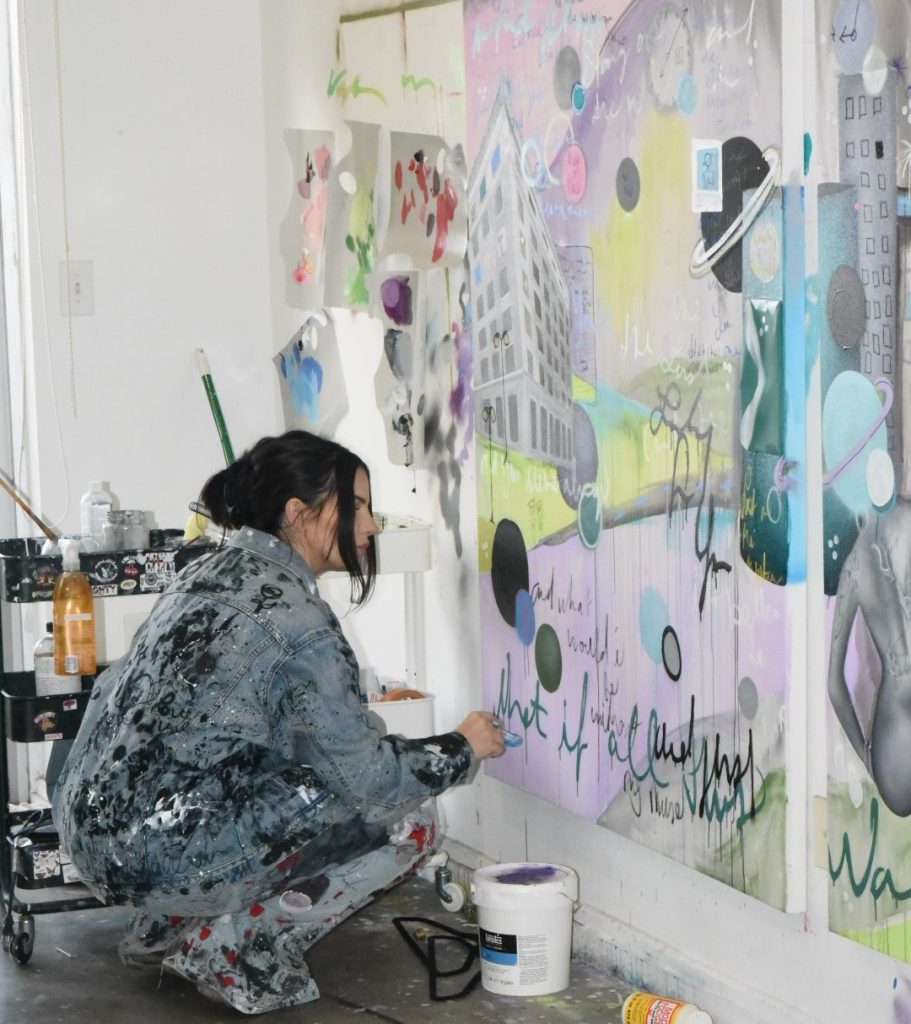
Key Takeaways
- The NFT industry does not posses a threat to the traditional art market, art experts claim
- According to Brock Pierce, collectors & artists should embrace the benefits of the NFT technology
YEREVAN (CoinChapter.com) – Buying and selling art is not new. For centuries patrons, galleries, and collectors have driven the industry, determining artists’ faith in practically every corner of the world. The global art market grossed over $64 billion in 2019. Despite the Covid-19 pandemic, which saw art sales drop over 20%, the market was worth $50 billion the following year.
Meanwhile, the global pandemic also fueled the digital art market, causing online sales to skyrocket. But as traditional art galleries pivoted, pushing sales online, another industry was making headway into the space. Nonfungible tokens, aka NFTs, have become the talk of the town.
The industry’s popularity rose enough to warrant Collins Dictionary to name NFT as the Word of the Year for 2021. In addition, more and more artists began making headlines after fetching millions of dollars in NFT sales. So it wasn’t long before someone asked the inevitable question, “Is this the end of the traditional art market?
Last December, well-known NFT collector Cozomo de’ Medici kickstarted a storm on Twitter about this very topic. Using the account of the online art gallery and source Artnet, Medici claimed NFTs help artists reclaim power from institutions. The collector even predicted traditional institutions (the old game) would soon cease to exist.
However, many artists and gallerists have since disagreed with this claim. While the industry has been making headlines, some see no merit in the claim that it will kill traditional art.
So, does the NFT industry threaten the global art market?
Recommended: Brie ‘Captain Marvel ‘ Larson bashed for buying a nonfungible token (NFT)
Traditional art industry sees no threat from NFTs
To help answer the question, CoinChapter spoke to gallerist Arushi Kapoor, artist Lindsay Dawn, and venture capitalist Brock Pierce.
Kapoor is the founder of ARUSHI Gallery, with locations in the UK, US, and India. At just 25, she is one of the youngest in the space. She is also an avid NFT collector with over 8000 works in her collection, including Bored Ape Yacht Club (BAYC) and CryptoPunks.

Lindsay Dawn is a Canadian artist whose works revolve around the female body in various settings. Her works have been displayed and installed in various galleries and locations, including Viola HQ in Los Angeles and the Neiman Marcus Private Gallery.
The duo is working together to launch a new NFT collection. Dubbed “Shama Shorties,” it will be a limited NFT set inspired by the paintings of Dawn.
With just 5,555 unique NFTs on the Ethereum blockchain, the project gives holders a chance to be a part of the “shama realm” with exclusive access to select print releases and art events worldwide. In addition, holders will also get first dibs on collectibles and merchandise, which the team will release in the future.
In addition, the project promises to donate 50% of proceeds from NFT sales to renowned charities working to combat women trafficking.
Kapoor does not buy the idea that NFTs are here to replace art galleries. According to her, the concern that traditional art dealerships will become obsolete is unfounded.
“The NFT revolution is not against traditional art galleries. On the contrary, this is a revolution in terms of an addition to what we already have. It is not here to change what art is,”
the young gallerist insists.
Her colleague, artist Lindsay Dawn is not threatened by NFTs either. Unlike many of her counterparts who take issues with the emerging industry, Dawn does not see a problem. To her, art is subjective. Anything can be art, whether it’s work she took weeks to create or an NFT someone designed in a matter of minutes.
“I don’t look at NFTs as a competition. The physical art world and the digital art world will never compete. It is art in various forms,”
the artist reassures.
Recommended: NFT meets scams: Over 80% of nonfungible tokens you buy today could be garbage
Will NFTs eventually kill the industry? Brock Pierce says NO!
Kapoor and Dawn are not the only ones who disagree with people who claim traditional art will die out.
Seasonal venture capitalist Brock Pierce also shares this view. However, the Chairman of Bitcoin Foundation believes NFTs are an asset, rather than a threat, to the age-old industry. The technology will provide authenticity and a chain of ownership of many art pieces in the physical realm.
“No, NFTs will not kill the traditional art market. They will also not render the art market obsolete. What NFTs are offering is an expansion of the art world into the digital realm, which was part of the natural evolution. Artists and collectors should embrace the coming trend to NFTs and the dramatic transformation and improvements that it will offer for the art world,”
Pierce told CoinChapter.

Another major problem plaguing the NFT industry is art theft. It has become commonplace to see artists complain that their art is stolen and sold as NFT on popular platforms. OpenSea even admitted over 80% of the items created with their free minting tool were plagiarized works, fake collections, and spam.
While such statistics worry Lindsay Dawn, she does not think it should stop any artist. She agrees that plagiarism is bad but insists that the technology NFTs have brought should not be painted negatively.
“Like any other aspect of life, you are subjecting yourself to being plagiarized. I think that is unavoidable. While art theft is something I think about, it is not something that stops or hinders me,”
she says.

Of course, art theft is not the only criticism the NFT industry has faced. For example, Hollywood actress and Captain Marvel star Brie Larson faced the ire of her fans when she bought an NFT in early February.
Blockchain technology, on which NFTs and cryptocurrencies depend, is very energy-intensive. Its electricity consumption is harmful to the environment, which has been a subject of intense criticism.
Despite the denunciations, Kapoor believes NFTs will continue to adapt and evolve. As for those who continue to scorn the new technology, she says history will prove them wrong, as it has on many occasions.
“People who are cynical about NFTs have the right to their opinions. However, the world evolves, and the cookie will one day crumble. When that happens, critics will find that they do not have the edge over those that are in the space,”
she says.
Cozomo de’ Medici elaborated that the internet killed the yellow pages, and Netflix killed Blockbuster. While history suggests that technology has replaced many traditional markets, will art be an exception?
Both Kapoor and Dawn have experience in both traditional art and NFTs, while Pierce comes from the blockchain industry. They reassure us we have nothing to worry about. Time will show.


